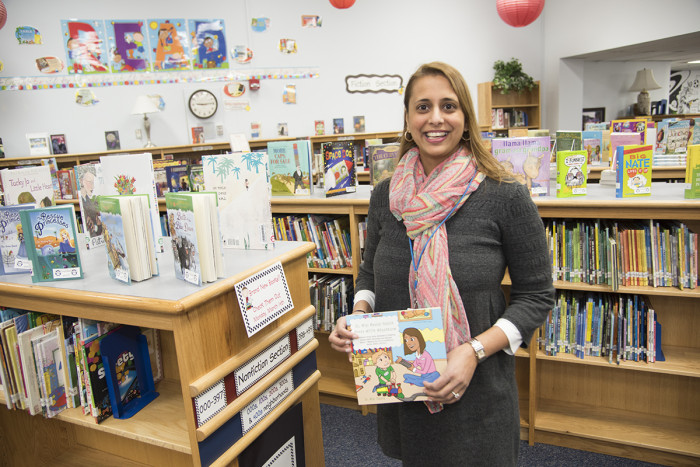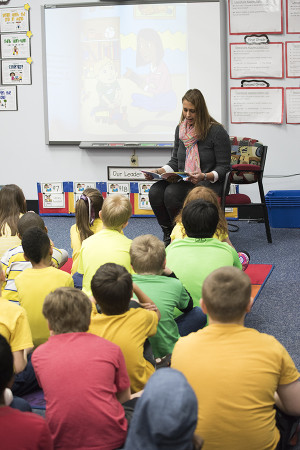Children’s book raises mental health awareness
Book aims to destigmatize psychiatry and kids who receive mental health services
 Robert Boston
Robert BostonWashington University child psychiatrist Mini Tandon recently read her book and spoke about psychiatry to children at Barretts Elementary School in the Parkway School District in St. Louis County.

Children’s books about going to the doctor and visiting the dentist abound. But Washington University child psychiatrist Mini Tandon, DO, felt an important topic was missing from kids’ bookshelves, so she wrote a book to help young children feel comfortable about visiting mental health specialists.
“I get questions from parents about how to tell their children why they need to see a psychiatrist and what to expect from the visit,” Tandon said. “We’re learning in psychiatry that early assessment and diagnosis is important to good outcomes, so this book is an attempt to destigmatize psychiatry for children who could benefit from mental health services.”
With assistance from illustrator Dwain Esper, Tandon, an assistant professor of child psychiatry at Washington University School of Medicine in St. Louis, penned “Dr. Mini Mental Health Meets Willie Wannaknow,” a children’s book about a young boy with attention deficit hyperactivity disorder (ADHD) and tics.
The idea, according to Tandon, is to increase awareness about psychiatric problems and help children realize it’s OK to seek care for psychiatric issues, such as ADHD, depression, anxiety or other problems.
“ADHD occurs in about 5 to 8 percent of school-aged children and appears to have about the same prevalence in preschoolers,” said Tandon, who sees patients at St. Louis Children’s Hospital and BJC Behavioral Health. “It’s likely that children in school will have peers who are hyperactive, impulsive, inattentive and off-task. So the book describes things that most kids will be familiar with.”
 Robert Boston
Robert BostonUntil now, the book has been made available mostly in pediatricians’ offices, but Tandon recently was invited to read it to students at local elementary schools. She visited the children and parents at Barretts Elementary in Manchester, Mo., in early March.
“The point of taking the book to the kids and parents is to help them learn that a child with ADHD is like any other child,” she explained. “Some kids need glasses. Others need different sorts of help. We also want children to know that some of their peers may be affected by ADHD or other problems and explain that some kids may not be able to stop moving around in their chairs, or why such children sometimes seem to get into trouble.”
Tandon’s book also attempts to ease fears children may have about visiting a psychiatrist.
“Willie was surprised to see she was not wearing a white coat and sat on the floor to play trains with him,” Tandon’s book reads in recounting a trip to see a psychiatrist. “She smiled a lot and even let him connect the train tracks as he wanted.”
As the story moves on, it involves Willie’s family and classmates as they learn more about what psychiatrists do and how they help people who need it, like Willie.
“We’re learning in the clinic and in research that earlier diagnosis and treatment is important, but that’s something we scientists talk about with each other,” Tandon said. “It’s important to translate that to the community in a digestible way, so starting with 3-, 4- and 5-year-olds, we’re trying to educate those we are interested in helping at the earliest possible stages of life.”
 Robert Boston
Robert BostonTandon is planning more books in the future, touching on other conditions that affect young children and adolescents, from autism to substance use.






